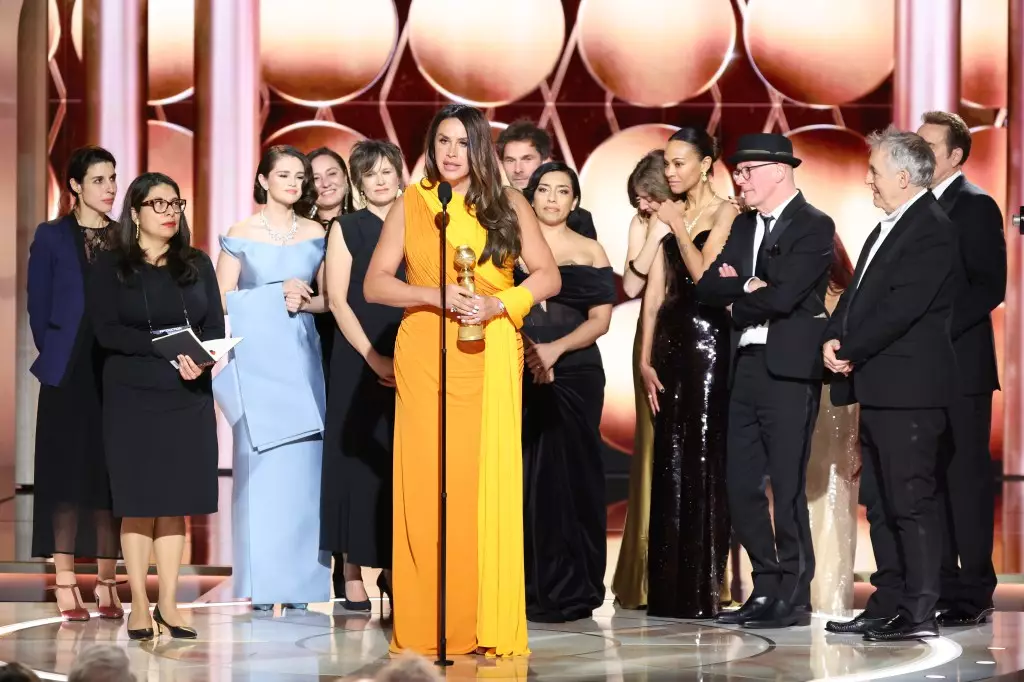The Golden Globe Awards have long stood as a benchmark for excellence in film and television, but this year’s event, the 82nd iteration, encountered a unique set of challenges and dynamics that shaped its viewership. Averaging 10.1 million viewers, according to VideoAmp data, the ceremony’s performance opens an intriguing dialogue about the evolving landscape of award shows in a competitive media environment.
This year, the Golden Globes made its debut on CBS, which likely impacted its ratings in several ways. Notably, the 10 million viewer threshold represents an improvement over last year’s preliminary numbers, which stood at 9.4 million; however, a direct year-over-year analysis remains complicated due to the absence of comparable ratings from VideoAmp for the previous year. This discrepancy highlights a significant area of concern as the industry grapples with varied measurement standards amid ongoing disputes, particularly between CBS’s parent company, Paramount, and Nielsen.
While the Golden Globes’ return to Sunday evenings—traditionally a promising time slot—gave it a favorable context for attracting viewers, the competition it faced was robust. The NFL matchup between the Kansas City Chiefs and the Denver Broncos played a crucial role in framing the evening’s television landscape. The Chiefs had a notably weakened roster, resulting in a less enthralling game, which could have muted the lead-in effect typically provided by a more exciting NFL contest. Furthermore, the event faced stiff competition from NBC’s Sunday Night Football matchup between Minnesota and Detroit, which drew a remarkable 28.5 million viewers—signifying the challenge that other programming must contend with during such high-stakes sports events.
Despite the formidable competition and mixed live ratings, the Golden Globes did see a 9% increase in live-streaming audiences via Paramount+ and the CBS App. This statistic underscores a broader trend influencing television consumption: a noticeable swing from traditional linear viewing to more flexible streaming options. The evolution in the medium by which audiences engage with award shows may hint at a shift that could redefine how organizers plan and promote such ceremonies in the future.
Additionally, the awards show demonstrated surprising vitality in the realm of social media engagement, generating over 40 million interactions on the night of the event. Social media has become a battleground for viewer engagement, and the Golden Globes thrived, achieving a staggering 124% year-over-year increase in interactions and boasting over 45.1 billion potential impressions. Perhaps it’s a sign that even as traditional viewership fluctuates, the digital dialogue surrounding these events is thriving, stimulating curiosity and participation even when viewers are not tuning in linearly.
Overcoming Past Controversies
The Golden Globes have worked diligently to mend their reputation following a damaging scandal involving the Hollywood Foreign Press Association (HFPA)—the organization historically responsible for the awards. The HFPA faced scrutiny for its lack of diversity and transparency before being disbanded in 2023. Last year’s ceremony marked the first awards given under a newly formed governing body, emphasizing a commitment to reform and representation. The show’s ratings resurgence this year could reflect a recovering public perception as audiences are more willing to engage with an event that demonstrates progress.
However, while the award ceremony has captured more viewers than the dismal 6.3 million attracted during its post-scandal return in 2023, it still falls short of pre-pandemic numbers, such as the 18 million who tuned in for the 2020 ceremony. The ongoing struggle for award shows like the Golden Globes to reclaim former glory in a fragmenting television landscape proves to be multi-faceted, demanding innovation both on-screen and in promotional strategies.
The 82nd Annual Golden Globe Awards highlights a complicated yet inspiring narrative concerning viewership trends in an age of rapid media displacement. While the event posted respectable ratings amidst fierce competition, it serves as a reminder of the multifarious challenges facing award shows today. Their success will hinge not only on reinstating past audiences but also on engaging newer demographics that prioritize social interaction and streaming flexibility. As the landscape shifts, it is imperative for such prestigious events to adapt and evolve to secure their cultural relevance amidst changing viewer habits.

